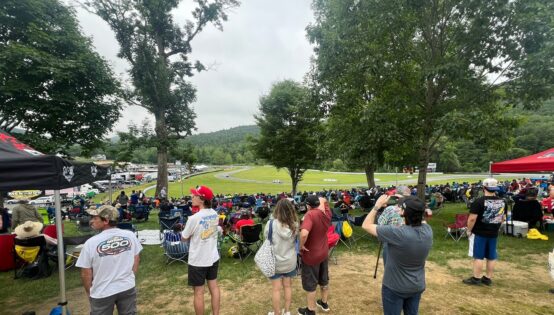Few weekends promise the thrill of NASCAR’s Craftsman Truck Series debuting on a storied road course like Lime Rock Park. On June 28, the LIUNA! 150 gathered a capacity crowd on the 1.53-mile, seven-turn layout carved into Connecticut’s Berkshire hills. Early on, the scene was textbook motorsport bliss. ARCA support races delivered action, fan zones brimmed with families sampling local fare, and upgrades, wider pit boxes, reinforced walls, and fresh SAFER barriers only added to the venue’s commitment to a flawless premiere.
Corey Heim, the 22-year-old phenom, stamped authority on every inch of asphalt, leading all but one of the 100 laps en route to his fifth win of the season. Reigning champion Ty Majeski, benefiting from a late restart, ultimately finished second, 1.381 seconds behind. But the on-track storyline had already been written: pure domination, devoid of strategic gambits or overtakes outside a brief five-lap restart dance.
That near-perfect procession exposed fault lines in both NASCAR’s competitive product and FOX’s broadcast execution. Executives had touted this as a “bold new chapter” for the series and the historic park, with NASCAR EVP Ben Kennedy declaring, “We are proud to bring the NASCAR Craftsman Truck Series to historic Lime Rock Park for the first time.” Yet, as the checkers fell, it was fans, online and in the seats. Who posed the tougher questions? Where was the battle? Why no pit stop drama? And was FOX’s coverage too sterile to capture what little intrigue existed?
At its core, this was not just another race. It was supposed to be a reinvention. Lime Rock Park’s elevation changes and tight esses promised a showcase of driver skill. Instead, Heim’s command renderings felt like a showcase of NASCAR’s limitations on road courses. Single-file trains, no undercuts or overcuts, and virtually zero suspense made fans call it a snoozefest. Meanwhile, with no green-flag pit stops to showcase, FOX’s cameras focused on scenic shots and commercials, missing an opportunity to cover even the limited pit activity during the red flag. Leaving viewers with cutaways to commercials rather than a split-second strategy. A quiet weekend in a venue that merited thunderous applause.
We’re here, Connecticut! pic.twitter.com/VFpIGJLFAP
— NASCAR CRAFTSMAN Trucks (@NASCAR_Trucks) June 27, 2025
One fan summed it up clearly on a Reddit post. “Yeah, I’ll pass. Having zero lead changes and hardly any passing in the top ten outside of the chaos at that last restart is not a selling point. Gorgeous track, but I’d rather see them go elsewhere.” That frustration wasn’t isolated. Online forums quickly filled with similar complaints. Not about the venue, but about the quality of the race and how it was presented to fans. And while Lime Rock Park showed logistical promise, the event felt disconnected from the energy expected in a NASCAR debut.
Does Lime Rock Park deserve another shot?
“Hopefully it was great in person. I watched only on TV, and it was massively underwhelming.” Television viewers expected the same crescendo of tension that typically builds at road-course venues like Sonoma or Mid-Ohio. Where multi-lane braking zones and variable tire strategies create must-watch moments. At Lime Rock, however, FOX’s broadcast spent more time on scenic drone shots, showing the park’s historic 1957-vintage layout, than on live pit-lane reports. Without that live strategy narrative, TV audiences lost the connective tissue that turns a routine lap into a high-stakes gamble.
“Maybe it was the lack of live pit stops? Not having any pit strategy certainly didn’t help. It was a shame. I had really high hopes for this race.” Green-flag pit stops are the heartbeat of NASCAR road-course drama. Think of Tyler Reddick’s daring two-tire call at COTA in 2024 that vaulted him from 12th to 4th in one cycle. At Lime Rock, every stop occurred under caution. A single red flag on Lap 37 led to controlled stops. Fans who once lauded Lime Rock’s narrow pit lane for its “pit-lane theater” were left watching crews stand idle, a muted contrast to the furious jackhammer of action seen at other recent Truck Series road-course stops.
“I’m sure Lime Rock did a great job with the event…but as far as the actual racing goes, it was bad.” Lime Rock Park’s physical characteristics. It is just 1.478 miles long with only seven turns. Naturally limit overtaking unless strategy intervenes. In its 68-year history, passing zones have relied on elevation-drop braking (Turn 5 into the “West Bend”) or the sharp, widening exit of Turn 7 onto the front straight. This weekend, however, Corey Heim built gaps of over seven seconds in each stage (Stage 1 gap: 7.36 s; Stage 2 gap: 7.89 s). With no live-pit shakeups and a single-lane track, those natural passing spots became conveyor belts. And the field formed a single file that rendered wheel-to-wheel skill all but invisible.
“I personally wasn’t a fan of the racing I saw on TV. The scenery looked nice, though.” Lime Rock’s bucolic setting, hemmed by pine forests and granite outcrops, has earned it a cult following among sports car purists. Legends from Phil Hill to Mario Andretti have praised its intimate viewing and pure layout. Yet when NASCAR’s big-bore trucks rolled out, the lack of on-screen drama turned those same postcard vistas into mere wallpaper. In 2024, when the Truck Series visited Canadian Tire Motorsport Park, fans saw 14 lead changes among five drivers. NASCAR fans thrive on bumper-to-bumper action and pit race flurry, and Lime Rock lacked on these fronts. What are your thoughts about the race, and should Truck Series return to the venue next year?
The post NASCAR & FOX Held Answerable as Fans Left Infuriated by ‘Snoozefest’ Event appeared first on EssentiallySports.
